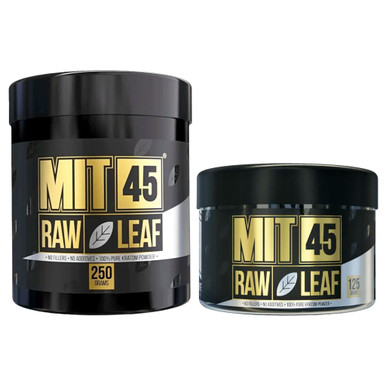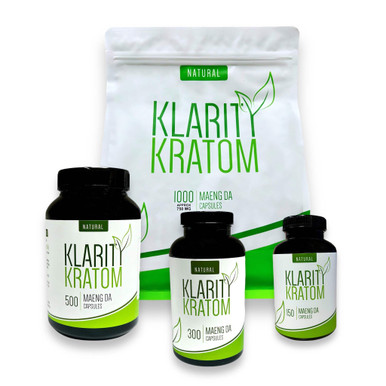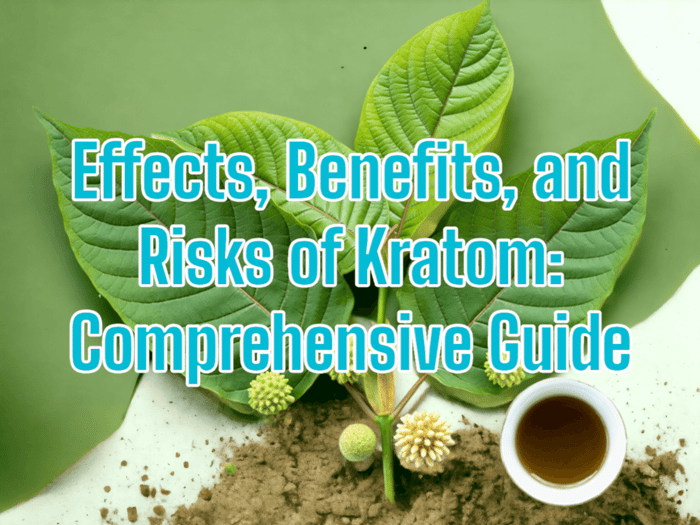
Navigating the Kratom Landscape: How Long Does It Stay in Your System?
Understanding Kratom: An Ancient Herb with Modern Consequences
How long does Kratom stay in your system? Derived from the leaves of the Mitragyna Speciosa tree in Southeast Asia, Kratom has gained global attention for its potent physiological effects. Used for centuries in traditional medicine, it holds primary value in pain relief and mood augmentation. This dual application has catapulted Kratom into the contemporary scene, functioning as an herbal supplement, recreational substance, and a contentious topic in public health discourse
Kratom: A Glimpse Into Its Journey
Historically, this cultural icon has had a vital role in the societies of Southeast Asia. Traditionally chewed or brewed into a tea, Kratom was utilized as a stimulant by manual laborers seeking to combat fatigue and boost productivity. It was also applied in folk medicine for addressing issues like pain, fever, diarrhea, and as a wound poultice.
Decoding Kratom Varieties
Today's landscape boasts various strains of Kratom, distinguished by the region of growth and vein colors on the leaves. These strains include Maeng Da, Bali, Borneo, Malay, Thai, and others, each with unique alkaloid profiles, and thus, varying physiological effects. Besides chewing raw leaves, the consumption of Kratom has evolved into more modern methods such as capsules, tablets, extracts, and beverages.
Kratom’s Legal Status
The legality of Kratom is a complex and evolving issue. Paradoxically, although it's native to Southeast Asia, it's illegal in several countries there including Thailand and Malaysia. In the United States, its legal status varies by state with some categorizing it as a controlled substance. The Drug Enforcement Administration (DEA) has listed Kratom as a "drug of concern" but has not classified it as a controlled substance federally.
Active Compounds: What Makes Kratom Work?
Key to the effects of Kratom are its active compounds, primarily mitragynine and 7-hydroxymitragynine. These alkaloids act upon the human nervous system, triggering reactions similar to opioids, but with notable differences. Mitragynine, the more abundant of the two, is thought to provide pain-relieving effects and a unique stimulatory action. 7-Hydroxymitragynine, although present in minor quantities, packs a substantial punch and is a pivotal actor in Kratom's psychoactive profile. It's the interplay of these alkaloids that dictates the overall impact of Kratom on the user.
As Kratom becomes more prevalent worldwide, understanding how it operates within the body is of paramount importance. This includes understanding how it's metabolized and how long it can remain detectable in one's system. As we delve further in this guide, we shall shed light on these aspects and more.
Mit 45 Raw White Leaf Kratom Powder

$14.79
Mit 45 Raw White Leaf Kratom Powder Get your mind and body ready for hours of energy! Get your mind and body ready for hours...… read more
Comprehensive Understanding of Kratom Metabolism and Half-life
Kratom metabolism, much like that of other substances, is a multi-step process designed to alter the substance to facilitate excretion. It commences with the substance's absorption into the bloodstream and culminates in its elimination via the kidneys.
Detailed Insight Into the Process of Metabolism
Initial Absorption
Upon consumption, Kratom goes through the digestive system where the active compounds, primarily mitragynine and 7-hydroxymitragynine, are absorbed into the bloodstream. This absorption process is influenced by several factors including mode of intake and stomach contents at the time of consumption.
Breakdown by Liver Enzymes
The absorbed compounds then reach the liver, where they’re metabolized by liver enzymes like CYP3A4 and CYP2D6. The primary function of these enzymes is the transformation of these compounds into metabolites that are easier for the body to get rid of.
Excretion via Kidneys
Finally, these metabolites are shuttled to the kidneys for excretion, either as urine or in some instances through feces. This process is largely dependent on individual hydration levels and kidney function.
Understanding the Approximate Half-life of Kratom
The half-life of a substance is the time it takes for half of the ingested dose to be eliminated from the body. When it comes to Kratom, studies provide a wide estimate range between 7 to 24 hours for half-life, partly due to individual variations and partly due to the challenges in measuring kratom's various metabolites.
Impacts of Dosage Amounts and Frequency of Use on Metabolism
The amount of Kratom consumed and frequency of use are pivotal factors in dictating its quantity in the body at any given time. Higher doses and frequent use can lead to slower metabolism rates and an extended presence of Kratom and its metabolites in your system.
Exploration of Individual Variation in Metabolism Times
Individual metabolic rates vary widely, leading to a range of detection windows for Kratom metabolites. Factors such as age, body mass, genetics, and hydration levels can influence the rate at which the body metabolizes and eliminates the substance from your system.
Role of Genetic Factors in Kratom Metabolism
Genetics plays a part in determining how efficiently someone metabolizes Kratom. Variability in the functioning of the enzymes responsible for metabolizing Kratom, largely owing to genetic factors, can lead to variations in the detection periods of Kratom metabolites in blood and urine tests.
Klarity Kratom Capsules Maeng Da

$14.99
Klarity Kratom Maeng Da Capsules Who doesn’t love their kratom in capsule form ready to go? Well, now you can enjoy the swift-hitting effects of...… read more
Unveiling the Detection Windows for Kratom
Given its complex metabolic process, detecting the presence of Kratom in the system is no easy feat. A myriad of testing methods have been developed with each boasting unique benefits and limitations.
Comprehensive Analysis of Tests for Detecting Kratom
Urine Tests
Urine tests are often the first line of defense when it comes to the detection of many substances, including Kratom in your system. These tests benefit from being non-invasive and efficient, providing results in a relatively short time frame. However, they may fall short in sensitivity, especially if the last Kratom usage was days prior to the test. Typically, Kratom can be detected in urine for about five to seven days post ingestion.
Blood Tests
Blood tests, on the other hand, are known for their high sensitivity and specificity. They are capable of identifying Kratom in the bloodstream within a short window of time post-ingestion. However, this feature also serves as their limitation. The efficiency of blood tests declines rapidly as the substance is metabolized and eventually eliminated from the body. Generally, Kratom can be detected in the blood system within a few hours to a couple of days post ingestion.
Hair Tests
The use of hair testing to determine Kratom usage is an emerging but promising field. Hair tests offer remarkable reliability and applicability, potentially detecting Kratom usage several months post-ingestion. However, the technology isn't as widespread as urine and blood tests, resulting in increased costs and longer result waiting periods.
Understanding Detection Thresholds and Lab Testing Methods
Understanding the detection of Kratom goes beyond knowing the various testing methods. It involves understanding detection thresholds, which refer to the minimum concentration of a substance that must be present before a test can accurately identify it.
A comprehensive and reliable lab analysis is essential to confirm the presence of Kratom in the system.
Differences Between Screening Tests and Confirmatory Tests
Not all tests serve the same purpose. Screening tests are typically fast and efficient, designed to provide a preliminary analysis. However, they're not as precise as confirmatory tests. Confirmatory tests are meticulous and are used to validate the results of screening tests, thereby eliminating the chances for false positives or negatives.
Importance of Lab Analysis in Confirming Kratom Use
Lab analysis plays an indispensable role in confirming Kratom use. Only under the stringent examination in professional labs where sophisticated techniques and equipment are used, can nuances between different alkaloids be discerned and a conclusive analysis be drawn. Therefore, it is paramount for anyone seeking an accurate reading of Kratom use to submit samples to a competent lab.
Exploring Factors Influencing the Half-life of Kratom
The half-life of Kratom is influenced by various individual and physiological factors that impact how the body metabolizes the substance. These elements include body fat, hydration levels, liver function, kidney function, drug interactions, and variables such as age, sex, and diet.
Body Fat Influence and the Concept of Lipid Solubility
As is the case with most drugs, lipid-soluble substances like Kratom have longer half-lives in individuals with higher body fat percentages. This is because adipose tissue (body fat) effectively sequesters these substances, releasing them slowly back into the bloodstream and prolonging their presence in the system.
Role of Hydration Levels in Metabolic Rate
Proper hydration assists in efficient metabolic processes and effective elimination of waste products. Individuals who maintain high levels of water intake can potentially expedite the excretion of Kratom metabolites via urine, thereby reducing its detection period.
Implication of Liver Function and Variations due to Liver Health Status
Liver enzymes play an instrumental role in metabolizing Kratom. For individuals with impaired liver function, the body's ability to break down and eliminate the substance may be hampered, thus extending its half-life. It’s also important to note that specific liver enzymes can exhibit genetic variations that may impact Kratom metabolism rates, leading to individual variability in detection windows.
Importance of Kidney Function in Kratom Excretion
Once metabolized, Kratom and its byproducts are primarily excreted via the kidneys. A healthy renal system is crucial for efficient elimination. Therefore, individuals with renal impairment might experience extended metabolic half-lives and subsequently longer detection periods for Kratom.
Impact of Polydrug Use and Drug Interactions on Kratom Metabolism
Concurrent use of other drugs can dramatically affect Kratom metabolism. Some substances might inhibit or induce liver enzymes involved in the metabolic process, potentially altering the half-life of Kratom. Moreover, other medications may compete for the same metabolic pathways, which can lead to an accumulation of unmetabolized Kratom in the system.
Understanding Other Potential Factors such as Age, Sex, and Diet
Age, sex, and diet can also contribute to individual variability. Older individuals typically have slower metabolism rates, while diet, particularly the intake of grapefruit juice, can inhibit certain liver enzymes, resulting in delayed metabolism. Although less well-studied, sex-based differences may possibly influence Kratom metabolism due to variances in body fat distribution and hormonal influences.
Examination of Techniques to Expedite Excretion and Issues with Masking Attempts
Methods to Hydrate More Frequently and its Considerations
One common method to try and expedite the excretion of Kratom is to hydrate more frequently. A well-hydrated body can facilitate the elimination of drugs through urine, potentially reducing detection windows. However, excessive hydration can lead to water toxicity and may even alter the results of urine tests, causing them to be inconclusive or false negatives.
Role of Physical Exercise in Enhancing Metabolism
Individuals who frequently engage in physical exercise tend to have faster metabolism rates. Higher metabolic rates might accelerate the elimination of Kratom and decrease its half-life in the system. However, the premise of exercise leading to quicker Kratom excretion is largely hypothetical and demands further study.
Dietary Changes and the Role of Specific Nutrients in Kratom Elimination
Dietary changes can alter individual metabolism rates and influence Kratom elimination. Consumption of certain nutrients, such as foods rich in cytochrome P450 enzymes, may promote the metabolism and elimination of Kratom. However, this should be carefully balanced and not be viewed as a guaranteed method to eliminate Kratom faster from the system.
Club 13 Kratom Liquid Extract 215mg

$12.95
Club 13 Kratom Liquid Extract 215mg Introducing the premium Club 13 Kratom Liquid Extract 215mg, specially crafted for experienced kratom enthusiasts who demand maximum potency...… read more
Risks Involved in Masking Attempts and the Consequence of False-Negatives
Attempts to mask the usage of Kratom, whether by hydration, exercise, or other methods, might skew test results. This can lead to false negatives, hampering the accuracy of drug tests. Also, there are ethical and legal implications linked with attempting to tamper with results, particularly in employment and legal contexts. Therefore, it’s imperative to understand the potential risks involved in masking attempts.
Ethical Considerations Related to Masking Kratom Use
The ethical considerations of masking Kratom use extend beyond the realm of just employment and legislations. It may hold implications for clinical diagnosis and treatment, affecting the quality of care and outcomes for those using Kratom, especially in cases of dependence and addiction.
While Kratom is associated with certain therapeutic benefits, chronic use also poses considerable risks. Being aware of these potential dangers, and understanding the mechanisms that contribute to them, empowers both casual users and professionals in related industries.
Adverse Effects and Warning Signs
Chronic use of Kratom may trigger a variety of negative health effects. These include constipation, appetite suppression, insomnia, and dehydration. Additionally, users may also experience more serious complications such as liver damage, seizures, or even psychosis. Moreover, high doses can lead to respiratory depression, a potentially life-threatening condition.
Withdrawal Timeline and Symptoms
Once a user discontinues Kratom, withdrawal symptoms may manifest within 6 to 12 hours, peak around 2 to 3 days, and subside after a week or so. These symptoms mimic those of opioid withdrawal and may include muscle aches, insomnia, irritability, aggressive behavior, and emotional changes.
Addiction Potential and Abuse Liability
Like many psychoactive substances, frequent use of Kratom can lead to addiction. Given its opioid-like effects, Kratom has a high potential for abuse. The transition from casual use to addiction can be subtle and gradual, making it difficult for individuals to recognize when they have developed a problem.
Dependence and Tolerance
Over time, regular Kratom users might build up tolerance, requiring larger doses to achieve the same effects. This escalation can intensify dependency on the substance. When a dependent user attempts to cut down or quit, they are met with unpleasant withdrawal symptoms, leading to a cycle that can be tough to break.
Post-Acute Withdrawal Syndrome (PAWS)
In some cases, long-term users might experience a condition called Post-Acute Withdrawal Syndrome (PAWS). This manifests as intermittent episodes of withdrawal symptoms that can persist for weeks or months after acute withdrawal has resolved.
Preventing Tolerance Buildup
Preventing tolerance buildup is crucial to mitigate dependency risk. This can be achieved by limiting usage, practicing moderation, alternating strains to prevent neuroadaptation, and taking frequent, necessary breaks. However, every individual responds differently to substances, so discretion and self-aware




